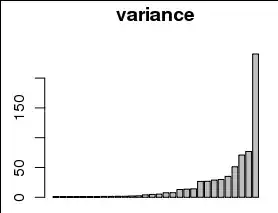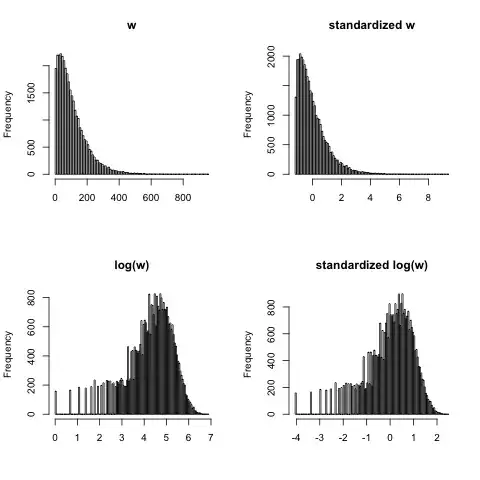Although pre-processing data by centering and scaling is important for some approaches, it's not necessary for simple logistic regressions like this. As you note in a comment, without centering and scaling you get an intercept of -1 and a coefficient of 0.27 for your predictor OEI. With an intercept below 0 and a positive coefficient for this necessarily positive predictor, you now will have predicted probabilities both above and below 0.5 (logit of 0) if the OEI values extend both above and below a cutoff of about 3.7. If you used those coefficients for producing your plot I suspect that you would reproduce the values returned by predict() on your model and data, as shown in your table.
Two more thoughts for going forward.
First, with respect to centering and scaling, these are sometimes helpful and sometimes necessary depending on the modeling approach you are using. For example, in your model on untransformed data the intercept represents the log odds of passing when OEI = 0. If that's far outside the usual range of OEI values, it could be helpful to pre-center your data so that the intercept represents the log-odds for a more typical OEI value. That easy interpretability of the intercept can be even more dramatic when there are interaction terms in a model. In methods like principal-components, ridge or LASSO regressions that depend on comparable scales among all the predictors, it's usually necessary to pre-center and scale data before determining the principal components or applying the penalties for ridge or LASSO.
But in any case of centering and scaling you need to keep track of whether the reported coefficients represent the data in the original or in the transformed scales. Some software will by default scale all predictors in ridge or LASSO modeling but then adjust the reported coefficients back to the original data scales. I don't know how the caret package handles such situations. If you do the centering and scaling yourself you need to keep track yourself. I suspect that in your case the coefficients you used to produce your graph were for the centered and scaled values, but you then tried to use them with the original OEI values.
Second, you note in a comment that you did some oversampling. That is not typically a good idea. There is extensive discussion on this site about oversampling. Oversampling might seem to improve accuracy in some situations, but accuracy is not a good measure of the quality of a logistic regression model. A proper scoring rule like the Brier score is the best way to evaluate a model that returns probability estimates. Once you have a good model for probabilities you can proceed to use information about your application to set criteria for classification if necessary.


